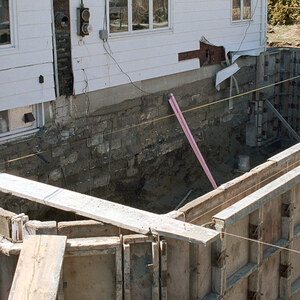what is the minimum thickness needed to go over the top of an already drywalled ceiling. the only weight it will be carrying is itself as the ceiling is allready insulated and the old drywall is not sagging.
Discussion Forum
Discussion Forum
Up Next
Video Shorts
Featured Story

Fine Homebuilding is excited to be the official media partner of the 2024 Building Science Symposium series! This event offers builders, tradesmen, architects, designers and suppliers to discuss topics ranging…
Highlights
"I have learned so much thanks to the searchable articles on the FHB website. I can confidently say that I expect to be a life-long subscriber." - M.K.

















Replies
3/8" - but 1/2" is more better
1/4" will conform to pretty much every dip
Jeff
I guess it depends on the reason for the skinning, and the condition of the old ceiling.
1/4 will show EVERY defect from the old ceiling.
3/8 will show the major waves if there are any, and might not do a good job covering some types of textures. (Some of the more pronounced textures from the fifties and sixties come to mind.)
1/2 will do in just about any case
I won't be laughing at the lies when I'm gone,
And I can't question how or when or why when I'm gone;
I can't live proud enough to die when I'm gone,
So I guess I'll have to do it while I'm here. (Phil Ochs)
Don't even think about wrestling a sheet of 1/4" drywall overhead. It's like holding up a wet noodle.
I've done it several with times with 3/8 drywall. Never had a problem, but it is one of those times where I strongly believe in using glue as well as screws.
When dry walling a ceiling you want to use as long of a sheet as possible to reduce butt joints. Rent or buy a dry wall lift - they are cheap and make life so easy. I did 12 footers by myself with a lift I bought. Paid for itself over and over.
That being said, handling long sheets of drywall you'll want to use 1/2 inch. Anything thinner will snap too easy, especially if you are working alone with the lift.
Also think about strapping the ceiling with 1x3's. If your rooms are laid out so the the ceiling joists are running the shorter width then strapping perpendicular to the joists lets you run the drywall going the shorter width as well. For many rooms that means no butt joints, or very few if a large room.
In your case going over existing ceiling, strapping would let you have any butt joints fall between straps. Then you use back blocking at the butt joints to create a tapered joint.
Quantum materiae materietur marmota monax si marmota monax materiam possit materiari?